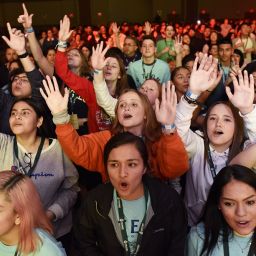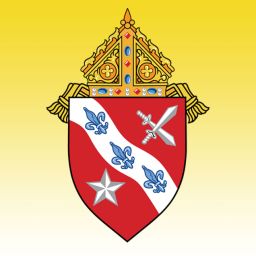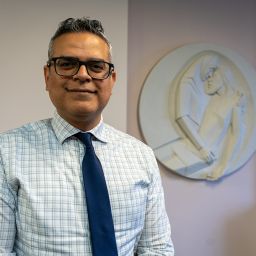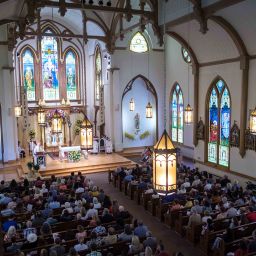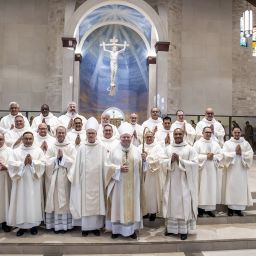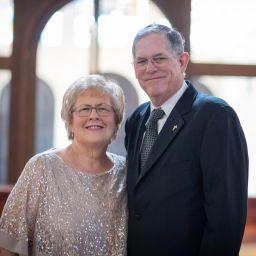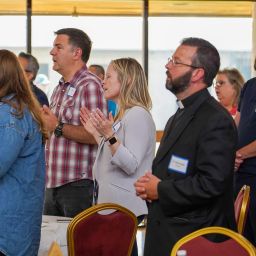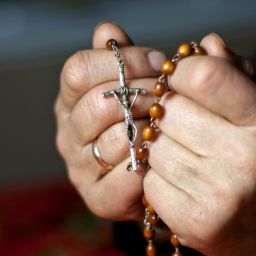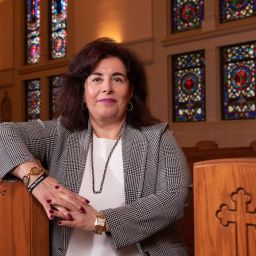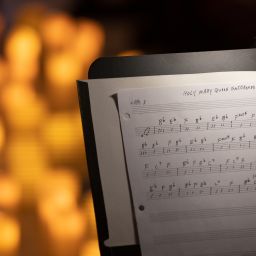By Father Alex Fry
Special to The Texas Catholic
As the Holy Father stepped onto the central loggia above St. Peter’s Square on May 8, I was overcome with emotion and pride, swept up in the historical significance of the moment. Like many around the world, I was intrigued — and excited — by his decision to take the name Leo XIV. In choosing a name so steeped in history, the new pope has offered a first glimpse into the kind of leadership he may bring, drawing on the legacy of those who bore the name before him.
In one of his earliest addresses to the cardinals, Pope Leo offered an explanation for his choice:
“Sensing myself called to continue in this same path, I chose to take the name Leo XIV. There are different reasons for this, but mainly because Pope Leo XIII in his historic encyclical ‘Rerum Novarum’ addressed the social question in the context of the first great industrial revolution. In our own day, the Church offers to everyone the treasury of her social teaching in response to another industrial revolution and to developments in the field of artificial intelligence that pose new challenges for the defense of human dignity, justice, and labor.”
It is fitting, then, that the first Leo he invoked was Leo XIII, who reigned from 1878 to 1903 and is remembered as a bridge between the old world and the modern age. At a time when the pope was still considered a “prisoner of the Vatican,” Leo XIII’s pontificate marked a turning point in the Church’s engagement with the social, political, and intellectual currents of the modern world. Most notably, his groundbreaking encyclical “Rerum Novarum” (1891) laid the foundation for modern Catholic social teaching, addressing the rights of workers, the responsibilities of employers, and the role of the state in promoting justice. Leo XIII was also deeply committed to renewing the Church’s intellectual tradition through the perennial philosophy of St. Thomas Aquinas and encouraged dialogue between faith and reason in an age increasingly shaped by secular ideologies. His legacy is one of confident engagement — of a Church not retreating from the world, but speaking into it with clarity, compassion, and conviction. In choosing the name Leo, our new Holy Father signals a call to that same bold faith and tireless resolve as we face the challenges of our own time.
But Leo XIII was not the only lion in the history of the papacy. We cannot overlook Pope St. Leo the Great, whose leadership in the fifth century helped define both the role of the pope and the voice of the Church in a fractured world. Reigning from 440 to 461, Leo the Great was a towering figure in both theology and diplomacy. In an era of political chaos and doctrinal confusion, he helped establish the papal office as a source of unity and authority in the universal Church. His Tome of Leo, a foundational Christological text, played a crucial role at the Council of Chalcedon in affirming Christ’s full divinity and full humanity. Yet, Leo was not only a theologian — he was also a courageous pastor and statesman. In 452, he famously met Attila the Hun at the gates of Rome and persuaded him to turn back, a moment that came to symbolize the moral and spiritual authority of the papacy even in times of crisis. In Leo the Great, we see a model of strength anchored in truth — one who led the Church with both doctrinal clarity and pastoral courage. It is no coincidence that Pope Leo XIV’s first public word — peace — echoes Leo the Great’s legacy as a peacemaker and shepherd, pointing to a papacy grounded in truth, resilience in trial, and unwavering in its hope for reconciliation.
As Pope Leo XIV begins his ministry, he walks in the shadow of lions — successors of Peter who proclaimed the Gospel with boldness, guided the Church through storm and change, and reminded the world that true authority lies in service and truth. Their legacy is not one of worldly power, but of great courage and deep faith: a witness to Christ, who is both the Lion of Judah and the Lamb of God. In choosing to follow in the legacy of the great Leonine popes, Pope Leo XIV has already spoken volumes about the course he hopes to chart for the Barque of Peter: onward — facing the challenges of our time with the strength that comes from Christ and the confidence that the Holy Spirit still guards and guides His Church.
Let us pray for Pope Leo XIV — that, strengthened by the legacy he invokes and the grace he has received, he may lead the Church with wisdom, courage, and a shepherd’s heart.
Father Alex Fry is parochial vicar of Christ the King Catholic Church in Dallas.
Cutline for featured image: Pope Leo XIV, on the central balcony of St. Peter’s Basilica at the Vatican, leads the midday recitation of the “Regina Coeli” prayer for the first time May 11, 2025. (CNS photo/Vatican Media)


